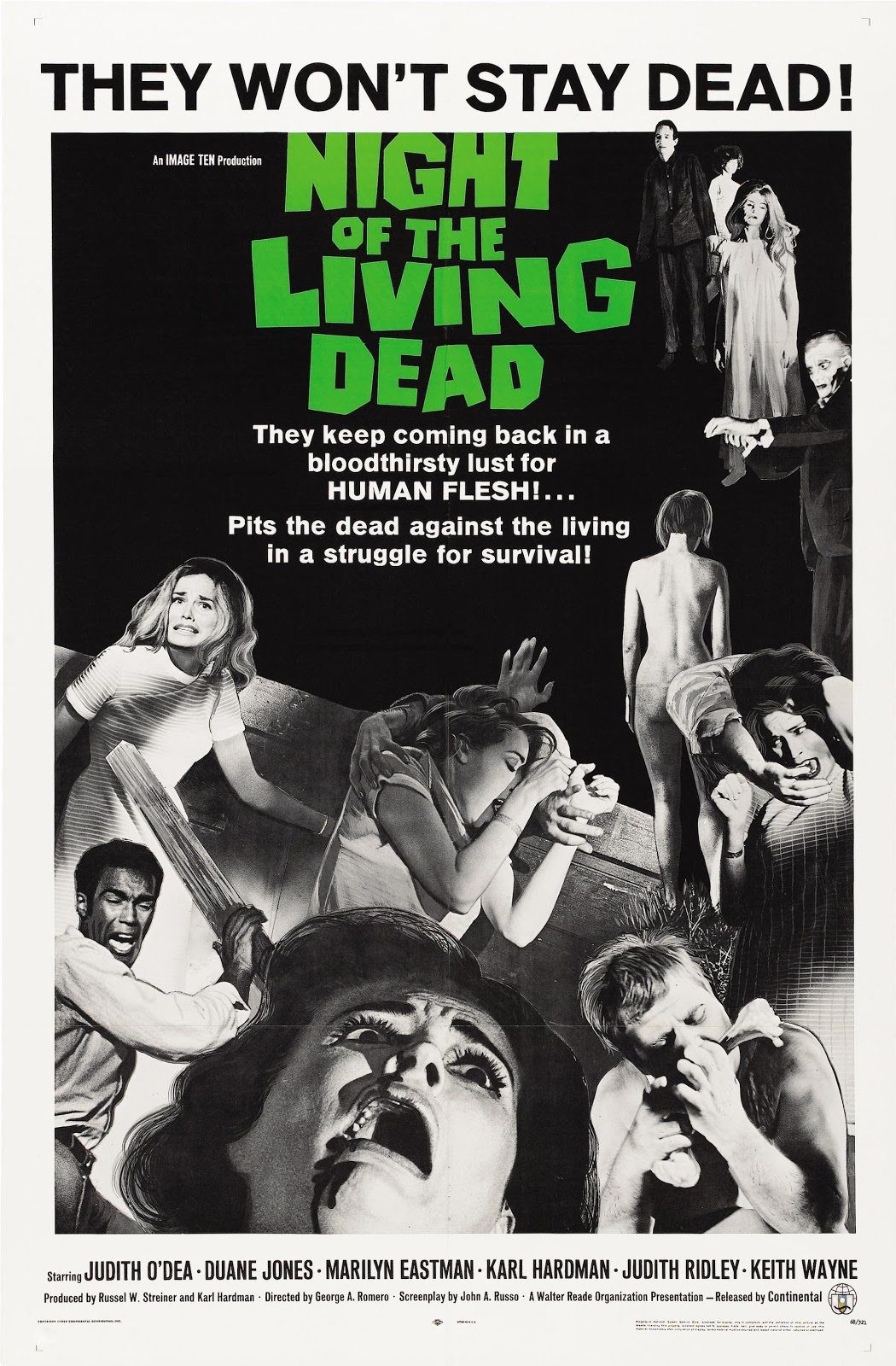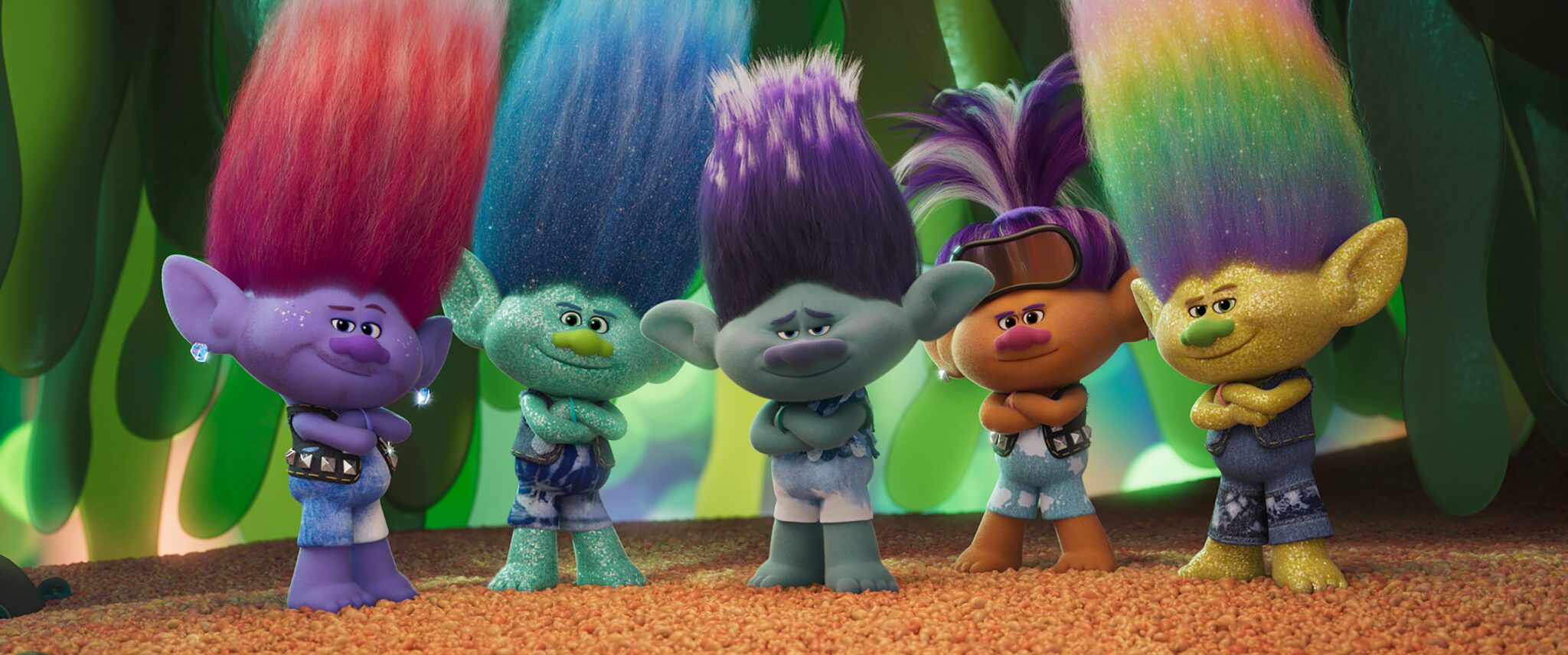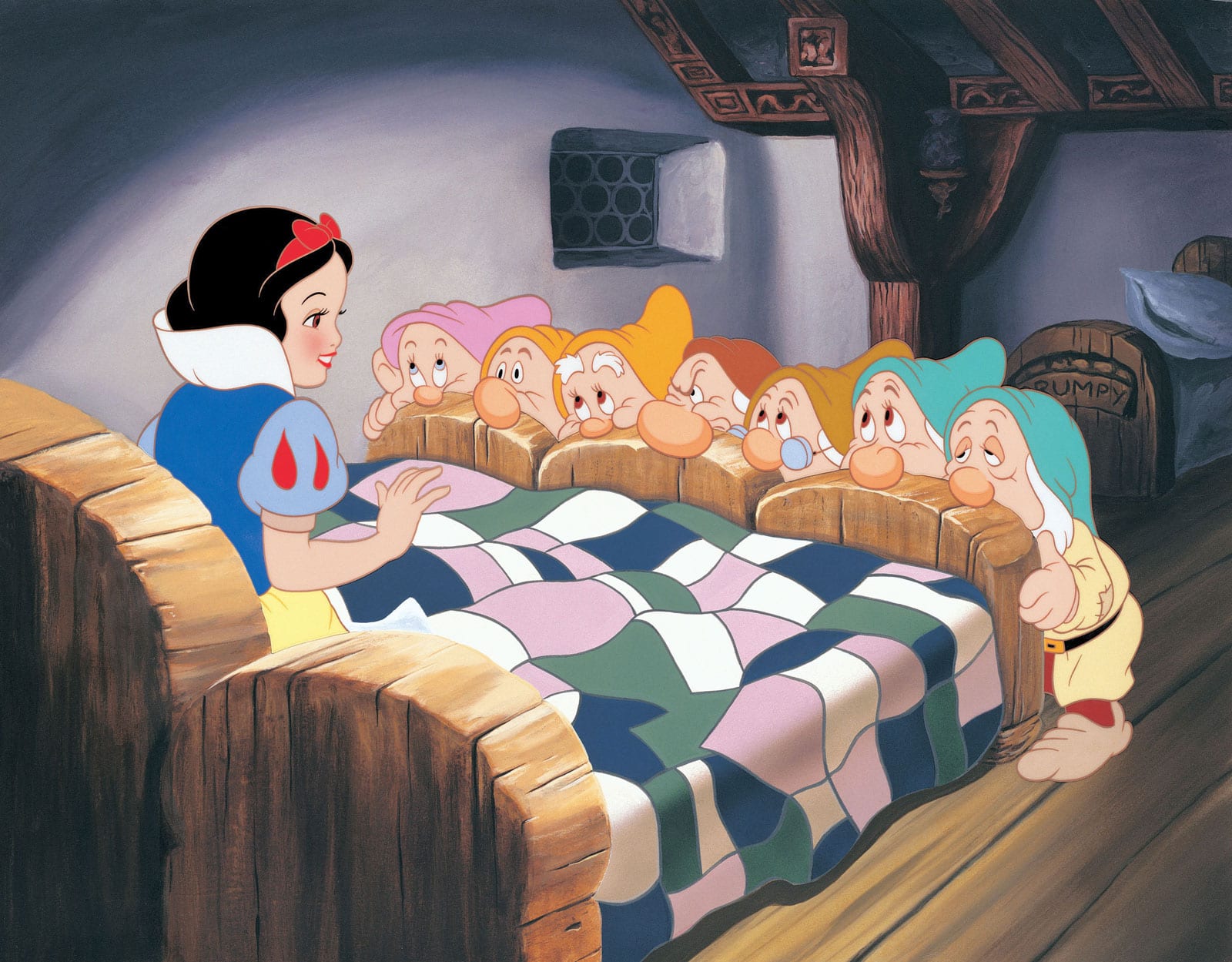How scary can chocolate syrup be?
Well, when you film it in black and white and use it to depict human blood–human blood oozing from prosthetics made to look like human body parts that are being consumed by actors chalked up in pancake makeup to look like freshly reanimated human corpses…
I ain’t putting that on my ice cream.
But that was the extent of Night of the Living Dead’s special effects budget.? No spurting squibs, no exploding eyeballs, no mechanical chest-bursting aliens, no CGI chainsawed-off limbs.? It used lighting and stuff that you could find in your pantry or medicine cabinet to scare the bejeezus out of millions, and it still holds up against all of the horror heavyweights of today.
But beyond the visuals, it used a story that is as terrifying today as it was nearly fifty years ago.? Aside from the obvious terror, it’s brimming with social commentary and even, some would argue, political satire.? And if you look deep enough, you can find bit of spirituality layered underneath the greasepaint.
And it’s even sweeter than Hershey’s.
Great.? Now I want chocolate milk.
Nah.
Too spooky.
In the kingdom of midnight movies, it is horror royalty. And if you?ve ever seen a zombie film, read a zombie book or comic or watched a runaway hit television show based thereupon, you can thank George Romero for his genre genesis giant, Night of the Living Dead.
Ironically, the term ?zombie? is never used in the film. A radio broadcast dubs them ?ghouls,? but there can be no mistake: if it plods like a zombie, moans like a zombie and devours human organs like a zombie, it?s a zombie.
There have been literal reams written about NOTLD and its austere origin. Heavily inspired by the great Richard Matheson?s 1954 novel I Am Legend, Romero and writing partner John Russo churned out two very different scripts before settling on the final flesh-eating free-for-all. Originally pitched for a $6,000 budget (funded by a group of ten backers), the movie eventually cost $114,000 to make. It recouped those costs more than one hundredfold, raking in $12 million in the U.S. alone.
The entire film was shot guerilla-style in and around Romero?s native Pittsburgh. The shoestring budget forced the film into black and white, but it only added to the creep-factor. It is considered groundbreaking for its social satire and its casting of a black leading man, which was near-taboo at the time. Originally panned by major critics, the film is now heralded as not only a horror classic, but a juggernaut of motion picture making as a whole?due, in large part, to its near-fifty-year lifespan as a regular midnight showing at cinemas and movie houses around the world. In 1999, it was added to the National Film Registry for its cultural significance. There have been remakes, re-releases and sequels galore, but the original still seems to trump them all.
It all begins in a rural Pennsylvania graveyard.
Barbara Blair (Judith O?Dea) and her brother, Johnny, have made their annual pilgrimage from Pittsburgh to place flowers on their father?s grave at the behest of their mother. As they arrive an announcer comes on over the car radio attempting to explain why the station had unexpectedly dropped off the air. It?s the first hint that something isn?t quite right. But Barbara and Johnny miss it. No matter; they soon discover the second foreboding omen: a shambling, tattered figure stumbling through the cemetery. It attacks Johnny, who falls during the struggle and breaks his neck on a tombstone. Barbara flees, but the snarling creature chases her and when she tries to drive away, she crashes into a tree. She takes off on foot, with the creature in ice-cold pursuit.
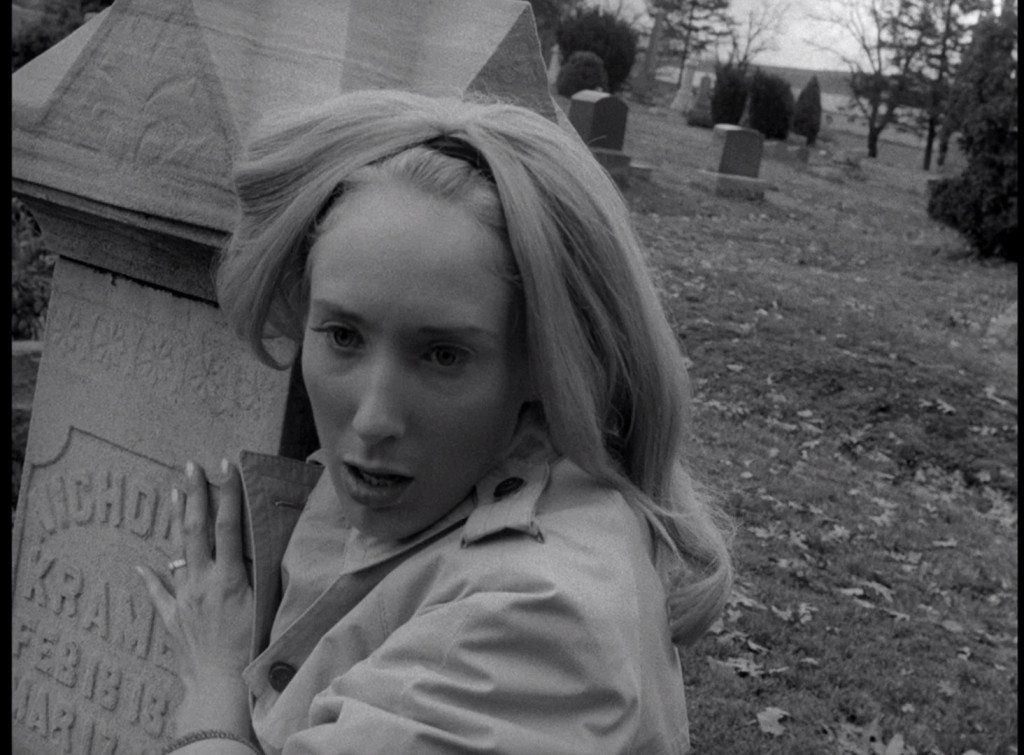
She finds an old farmhouse and darts inside. When she comes upon the mangled corpse of (assumedly) the house?s owner, she bolts. But by this point, her stalker has brought some friends. As a group of the zombies start closing in, she is suddenly pulled into the house by another refugee from the madness, the stalwart and resourceful Ben (Duane Jones) who barely escaped a similar mob, just hours before. Ben begins boarding up the windows as Barbara breaks down from the trauma.
It seems no one knows where the zombies have come from. According to a radio newsman, the best scientists can come up with is that corpses are rising because of space radiation. Whatever the cause, they are popping up en masse, wiping out hundreds of East Coasters.
Ben and Barbara soon find out they aren?t alone in the house. A family is holed up in the cellar along with a teenage couple, all of them trying to ride out the storm of the undead outside. There?s just one problem: the family daughter has been bitten by one of the things. And we all know what happens you get bitten by a zombie.
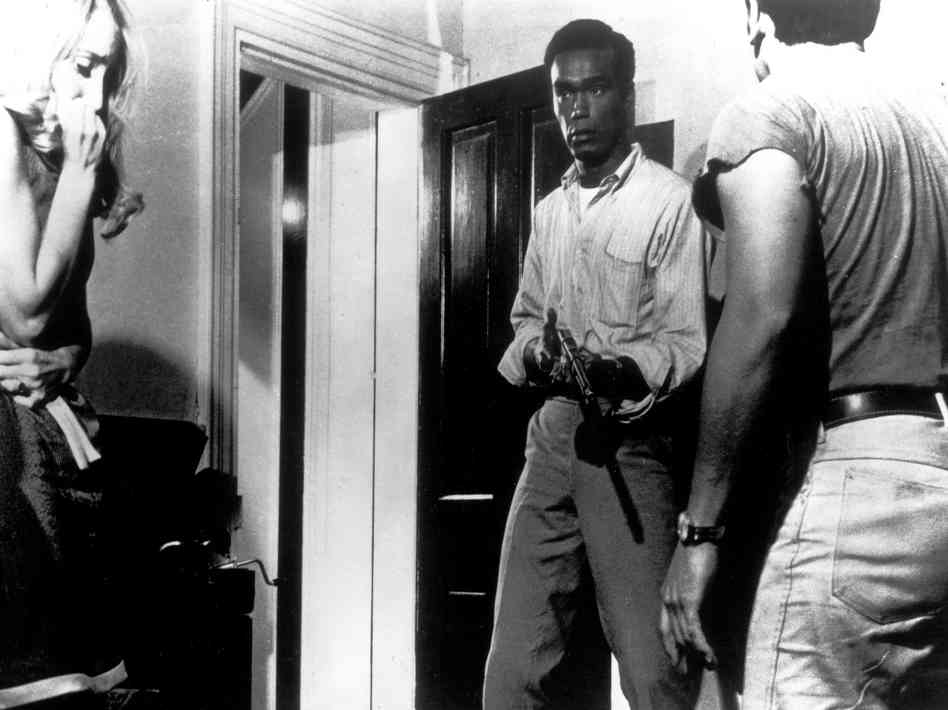
For such a simple premise, the film packs a heap of commentary into that tiny farmhouse. There?s implied racial tension, as Ben (who?s black) and Harry Cooper (Karl Hardman), the family?s paternal unit (who?s white) butt heads over whether to make a stand on the ground floor or retreat to the cellar (which Ben deems a ?deathtrap?). There are xenophobic undertones of a post-Vietnam, Cold War America wary of the Communist wolf at the door. And it?s hard not to recognize the symbolic barbarity of the human race in general?how we prey upon our own to satisfy our own mindless hungers and desires.
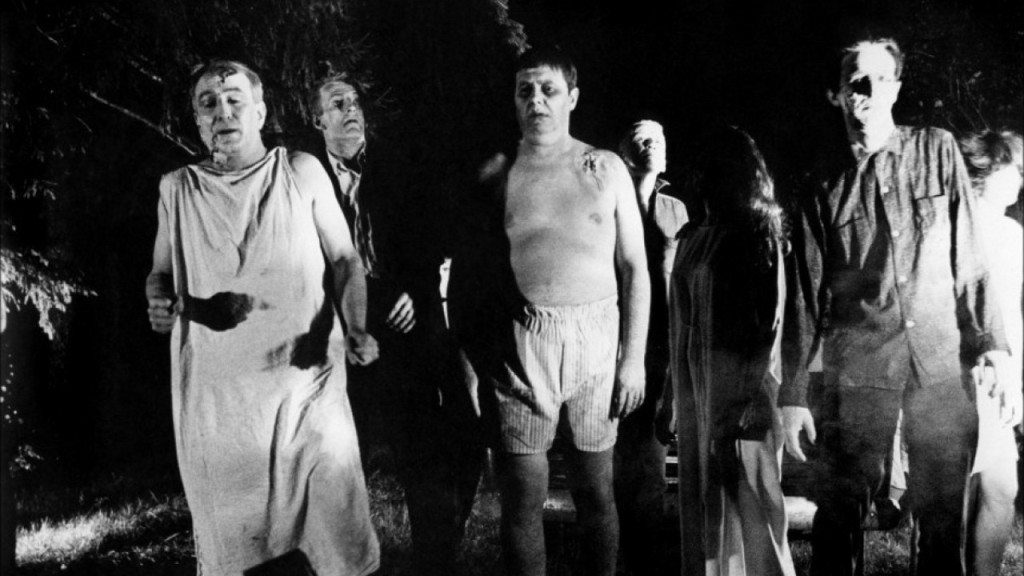
From a spiritual perspective, the zombies could easily be seen as representative as the unsaved?or possibly even the hypocritical faithful who resemble the ?whitewashed tombs? Christ warns against.
?Woe to you, teachers of the law and Pharisees, you hypocrites! You are like whitewashed tombs, which look beautiful on the outside but on the inside are full of the bones of the dead and everything unclean.? (Matthew 23: 27; NIV).
And what of the living remnant inside the house? You could argue that the uncompromising, uncooperative Cooper is just as dead on the inside. But the rest? When they work together, they are strong, more than capable, in fact despite their differences, of holding off the murderous invaders. But when they separate or follow their own agenda (as in Cooper?s) case, the wheels fall off. It brings to mind Paul?s teachings on cooperation within the church.
“There are different kinds of gifts, but the same Spirit distributes them. There are different kinds of service, but the same Lord. There are different kinds of working, but in all of them and in everyone it is the same God at work.
Now to each one the manifestation of the Spirit is given for the common good. To one there is given through the Spirit a message of wisdom, to another a message of knowledge by means of the same Spirit, to another faith by the same Spirit, to another gifts of healing by that one Spirit, to another miraculous powers, to another prophecy, to another distinguishing between spirits, to another speaking in different kinds of tongues, and to still another the interpretation of tongues. All these are the work of one and the same Spirit, and he distributes them to each one, just as he determines.
Just as a body, though one, has many parts, but all its many parts form one body, so it is with Christ. For we were all baptized by one Spirit so as to form one body?whether Jews or Gentiles, slave or free?and we were all given the one Spirit to drink. Even so the body is not made up of one part but of many.
“Now if the foot should say, ‘Because I am not a hand, I do not belong to the body,’ it would not for that reason stop being part of the body. And if the ear should say, ‘Because I am not an eye, I do not belong to the body,’ it would not for that reason stop being part of the body. If the whole body were an eye, where would the sense of hearing be? If the whole body were an ear, where would the sense of smell be? But in fact God has placed the parts in the body, every one of them, just as he wanted them to be. If they were all one part, where would the body be? As it is, there are many parts, but one body.” (1 Corinthians 12: 4-20; NIV)
We, as Christians, may not always agree. And heaven knows, we all have different skills and gifts to offer. None is more important than the other. It?s only when we use them together for the same goal?God?s glory?that we can survive as a Faith and a Church. While?zombies might not be waiting to divide and conquer us, the Deceiver is?and that?s a much more frightening ghoul than the black and white monsters that haunt the silver screen. United we stand and divided, we most definitely will fall.
Dear Lord, may we, as brothers and sisters in Christ, keep fighting the faith as one with all the resources you?ve given us and for your Kingdom?s sake, help us to stop eating each other alive. Amen.

